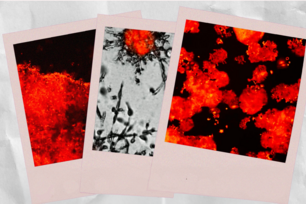The people behind the paper
In the summer of 2002, graduate student Piyush Gupta came up with an idea about the mechanisms that might drive the growth of melanomas, an often deadly form of skin cancer. In September 2005, he and his colleagues published a paper in Nature Genetics that validated the idea. His three-year journey demonstrated how biological research thrives on informal collaborations inside and outside a home laboratory, in this case the lab of Whitehead Member Robert Weinberg.
Gupta and his seven collaborators demonstrated that human melanocytes, the skin cells that produce pigment, appear to be far more predisposed than most cells to turn malignant because of their developmental history. (See “Researchers discover why melanoma is so malignant”) Once morphed into cancer cells, melanocytes reawaken a dormant cellular process that lets them scatter throughout the body, with a gene called Slug playing a leading role.
The researchers demonstrated how much more effectively melanoma metastasizes, compared to other cancers, when injected in mice. They proved that this is not caused by mutations in the melanoma tumor beyond those needed to make the initial primary tumor. And they showed that when the melanoma cells are deprived of the Slug gene, their ability to metastasize is strongly inhibited.
As Gupta kicked off the project, he drew on occasional guidance from Weinberg and other Whitehead researchers. As challenges rose, he also tapped into what he describes as “the social network of science,” getting expertise and suggestions from other researchers near and far.
“I had to learn every technique in this paper,” says Gupta, whose undergraduate degree was in math and biochemistry. “There were many technical and experimental hurdles along the way that I could never have overcome without the generous assistance of others in the lab. When experiments did work, I drew heavily on discussions with Bob, collaborators and others in the lab to help me to conceptualize my results.”
“I run a lab that actively encourages people like Piyush to go out and take initiatives on their own, including forming collaborations with other laboratories” says Weinberg. “One of the key powers of our scientific community is an ability to form transient alliances with other research groups in order to get certain projects done. This explains how Piyush accomplished so much in such a relatively short time.”
***
This article first appeared in the Spring 2006 issue of Paradigm magazine.
Topics
Contact
Communications and Public Affairs
Phone: 617-452-4630
Email: newsroom@wi.mit.edu


